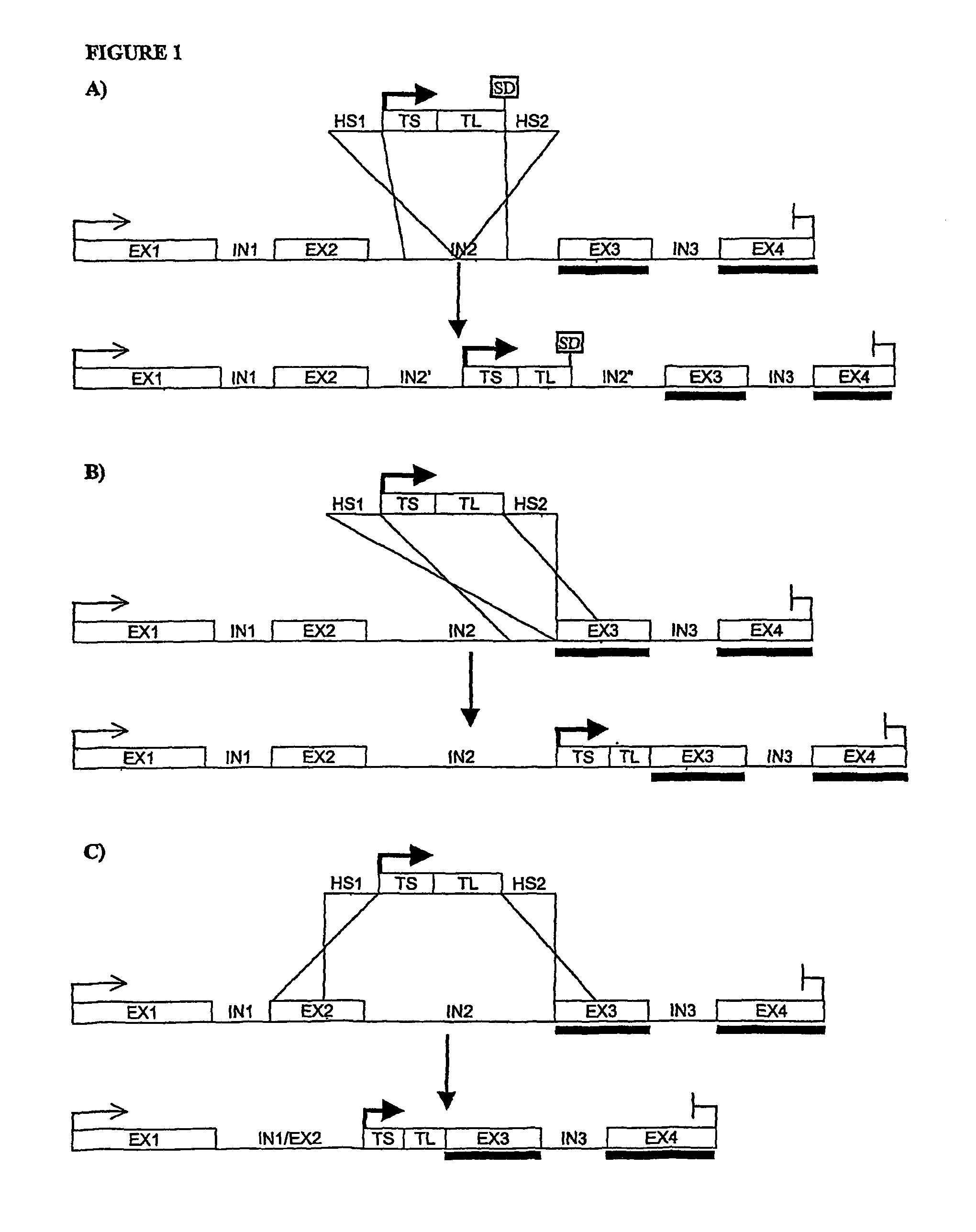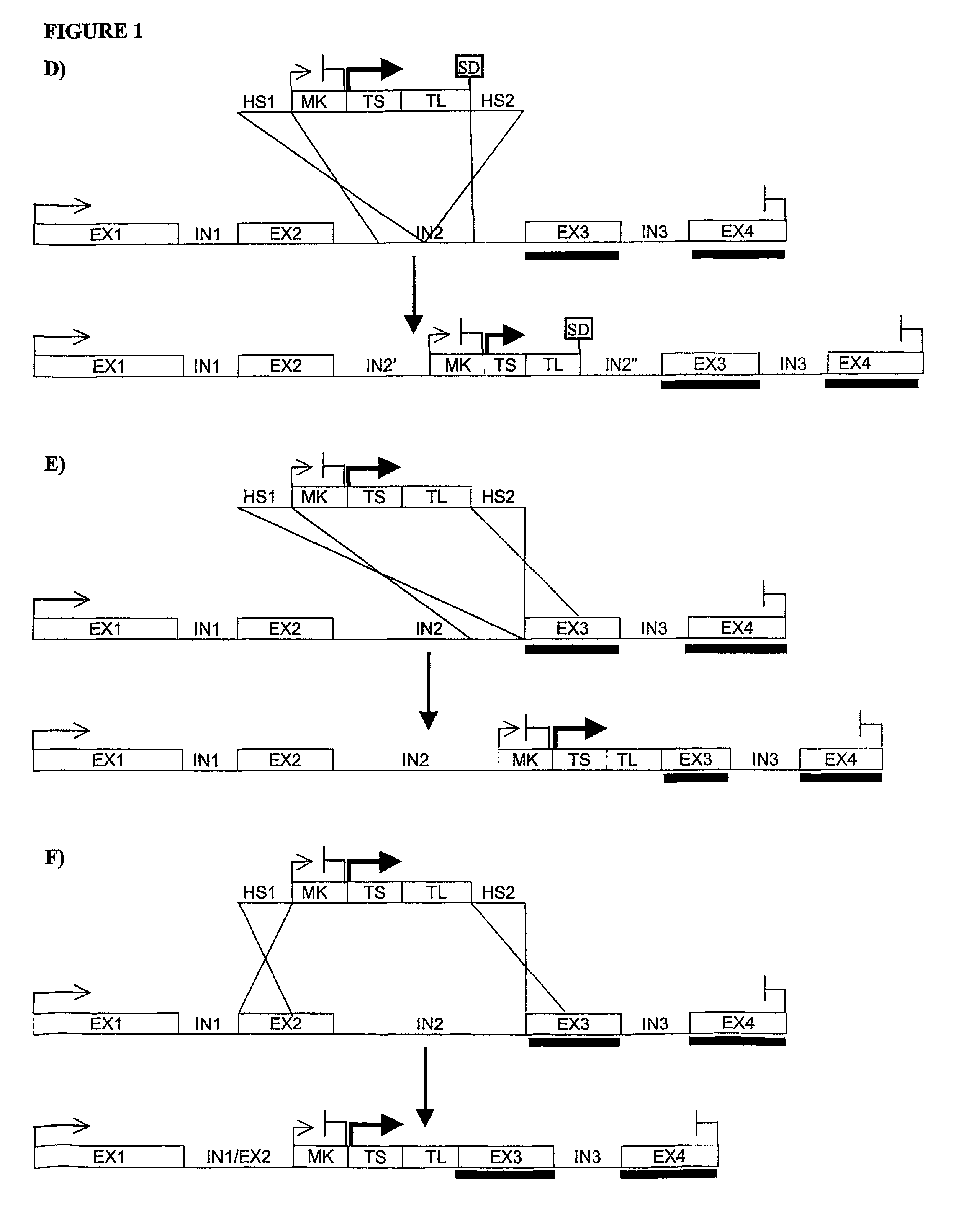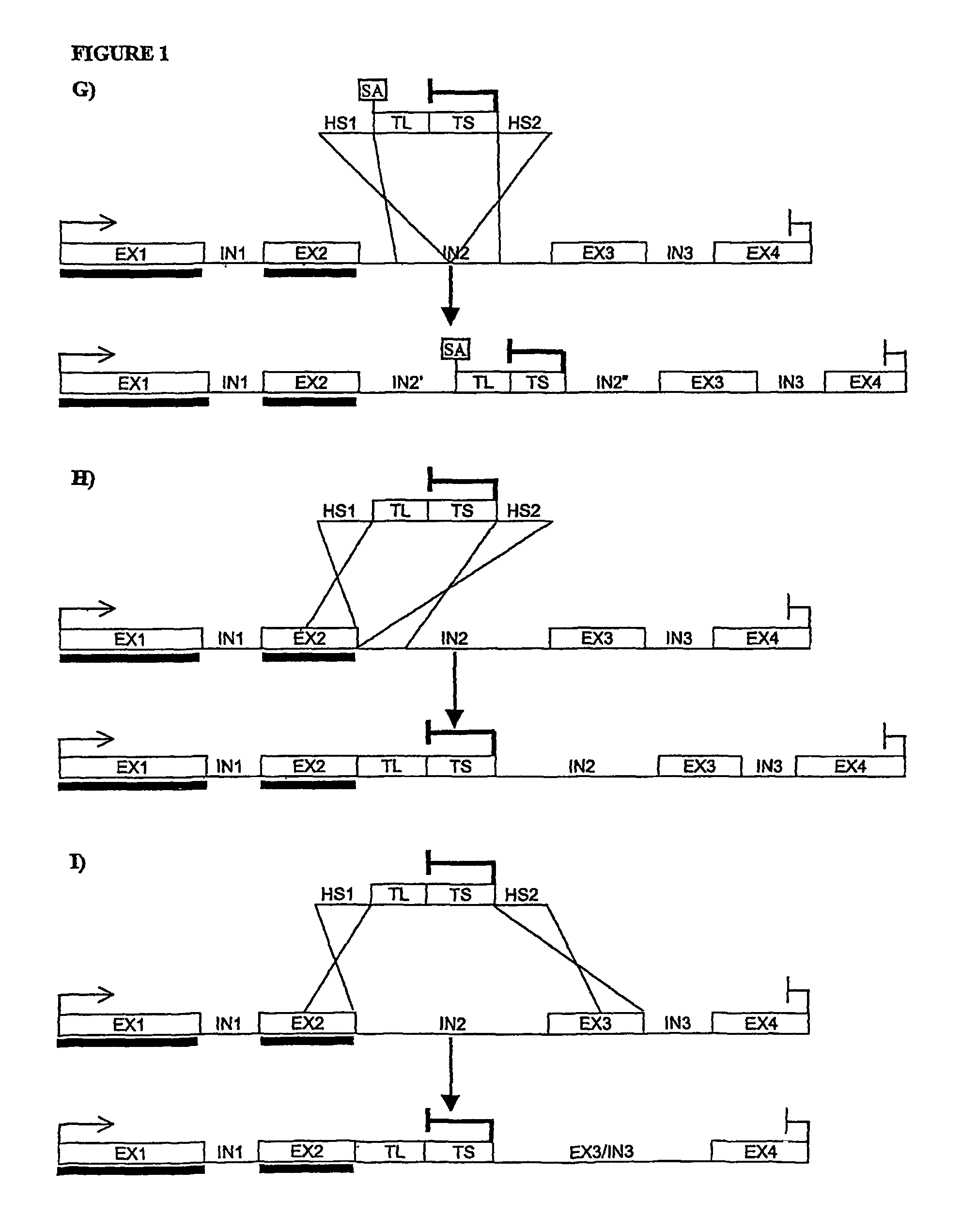Method of producing functional protein domains
a technology of functional protein and domain, which is applied in the field of producing functional protein domain, can solve the problems of delay in the development of a recombinant product, time-consuming isolation of relevant clones, and high technical requirements of the whole process of recombinant dna technology
- Summary
- Abstract
- Description
- Claims
- Application Information
AI Technical Summary
Benefits of technology
Problems solved by technology
Method used
Image
Examples
examples
Soluble TRANCE
[0170]The mouse TRANCE gene contains 5 exons, the first one coding essentially for the intracellular and transmembrane domain of the protein, while most of the extracellular domain is coded by the remaining 4 exons. In particular, the segment specifically coding for the in vivo functional protein domain (soluble TRANCE or sTRANCE) is coded entirely by the 3rd, 4th, and 5th exon (Lum L. et al., J Biol Chem. (1999), 274(19):13613-8; Kodaira K. et al., Gene (1999), 230(1), 121-127). The structure of the corresponding human gene is not known yet but a human genomic segment associated to human chromosome 13 (GenBank record NT—009935) contains the coding sequence of human TRANCE protein divided into segments which are highly similar to the exons of mouse TRANCE gene in terms of sequence and length. The length of the intronic sequences seems also similar in the two genes (FIG. 2). Recently, sTRANCE forms having slightly different N-terminal sequences have been characterized (...
PUM
| Property | Measurement | Unit |
|---|---|---|
| diameter | aaaaa | aaaaa |
| volume | aaaaa | aaaaa |
| volume | aaaaa | aaaaa |
Abstract
Description
Claims
Application Information
 Login to View More
Login to View More - R&D
- Intellectual Property
- Life Sciences
- Materials
- Tech Scout
- Unparalleled Data Quality
- Higher Quality Content
- 60% Fewer Hallucinations
Browse by: Latest US Patents, China's latest patents, Technical Efficacy Thesaurus, Application Domain, Technology Topic, Popular Technical Reports.
© 2025 PatSnap. All rights reserved.Legal|Privacy policy|Modern Slavery Act Transparency Statement|Sitemap|About US| Contact US: help@patsnap.com



